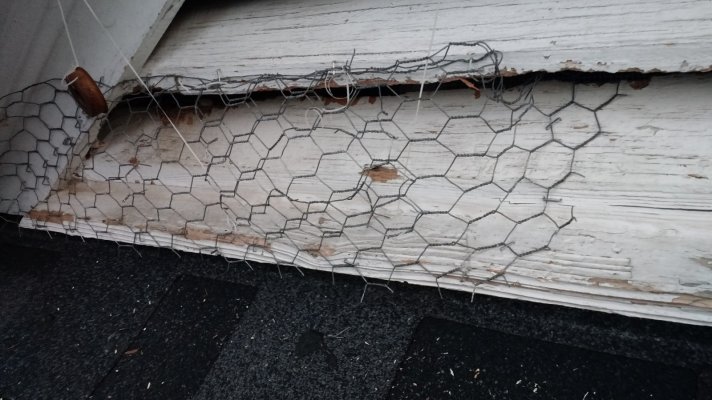It was last Wednesday night, after a very stressful day at work. Wednesday is also known as "Pickup Night." The housekeepers come on Thursday. That means Wednesday night is when we clear off all the horizontal surfaces so they can be properly cleaned the next day.
As I was straightening up, I noticed a little water leaking in one of the bathrooms. It appeared to be from between the toilet base and the tank.
So i got out my tools, then set out to block in the water going to the toilet. The valve leaked three or four drops a second while I was closing it, but I wasn't too worried. I know that those seals are really only made to hold when the valve is fully open or fully closed.
But when I got it fully closed, it was still leaking quite a bit. I tightened down a bit more, and it seemed to slow down a bit, so I put some more muscle on it.
Well, the doggone valve stem broke right off in my hand and a gushing jet of water exploded out, soaking me and the rest of the bathroom. While trying (mostly unsuccessfully) to hold back the surging torrent with my hands, I hollered at my wife, "Debbie, turn of the main water supply!"
Then I realized Debbie doesn't have any idea where the main water valve is, so I abandoned the bathroom Niagara and ran full speed to the back yard, my sneakers squishing with every step.
On the way back from the back yard, I picked up a handful of old towels. As I began mopping up, my wife found me, and I told her what had happened. She asks, “Now, the water is only off in this bathroom, right?”
When I explained that the water was off in the whole house, she said, “Well, we’ve got to get someone out here tonight, because I really need to take a shower and wash my hair before bible study tomorrow.” (Debbie retired about two years ago.)
I hate doing plumbing work, so I don’t mind hiring a plumber, but I don’t want to pay the after-hours charges, so I told her, “God and the bible study ladies will forgive you if you don’t get a shower tomorrow.” She didn’t seem convinced, so I pulled the water supply line loose from the valve. (By the way, in this case, it hardly mattered, but if you pull that line loose without first flushing, you’ll spill a gallon of water on the floor.)
Then I set out to remove the busted valve. On a compression fitting, of course, the threaded open end of the nut faces away from the wall, so that it can hold the valve body on to the tubing coming out of the wall. When you’re facing the wall, if you grab on to the valve body and turn it counter clockwise, it will turn and turn without ever breaking the threads loose. It had been 10 years or so since I had assembled a compression fitting, so I forgot. When I turned it the right direction, it came off easily, and I was off to Home Depot.
Once I had the part in hand, everything went together smoothly. The whole episode was probably less than an hour start to finish, including time spent chasing parts.
Still, I really don’t need this kind of excitement on a weeknight after a hard day at work. Especially on pickup night.
The moral of the story: I really need to retire.

 Once I had the part in hand, everything went together smoothly. The whole episode was probably less than an hour start to finish, including time spent chasing parts.
Once I had the part in hand, everything went together smoothly. The whole episode was probably less than an hour start to finish, including time spent chasing parts.